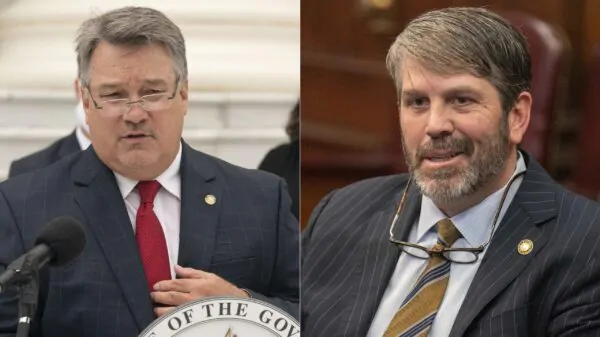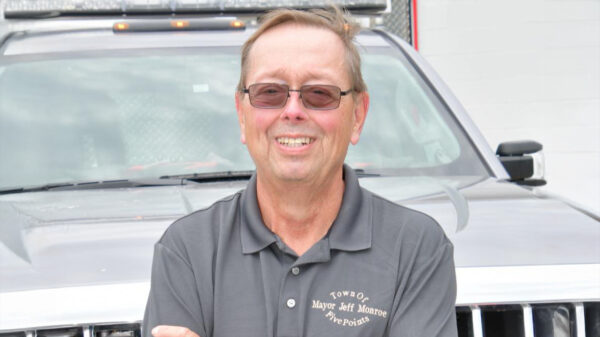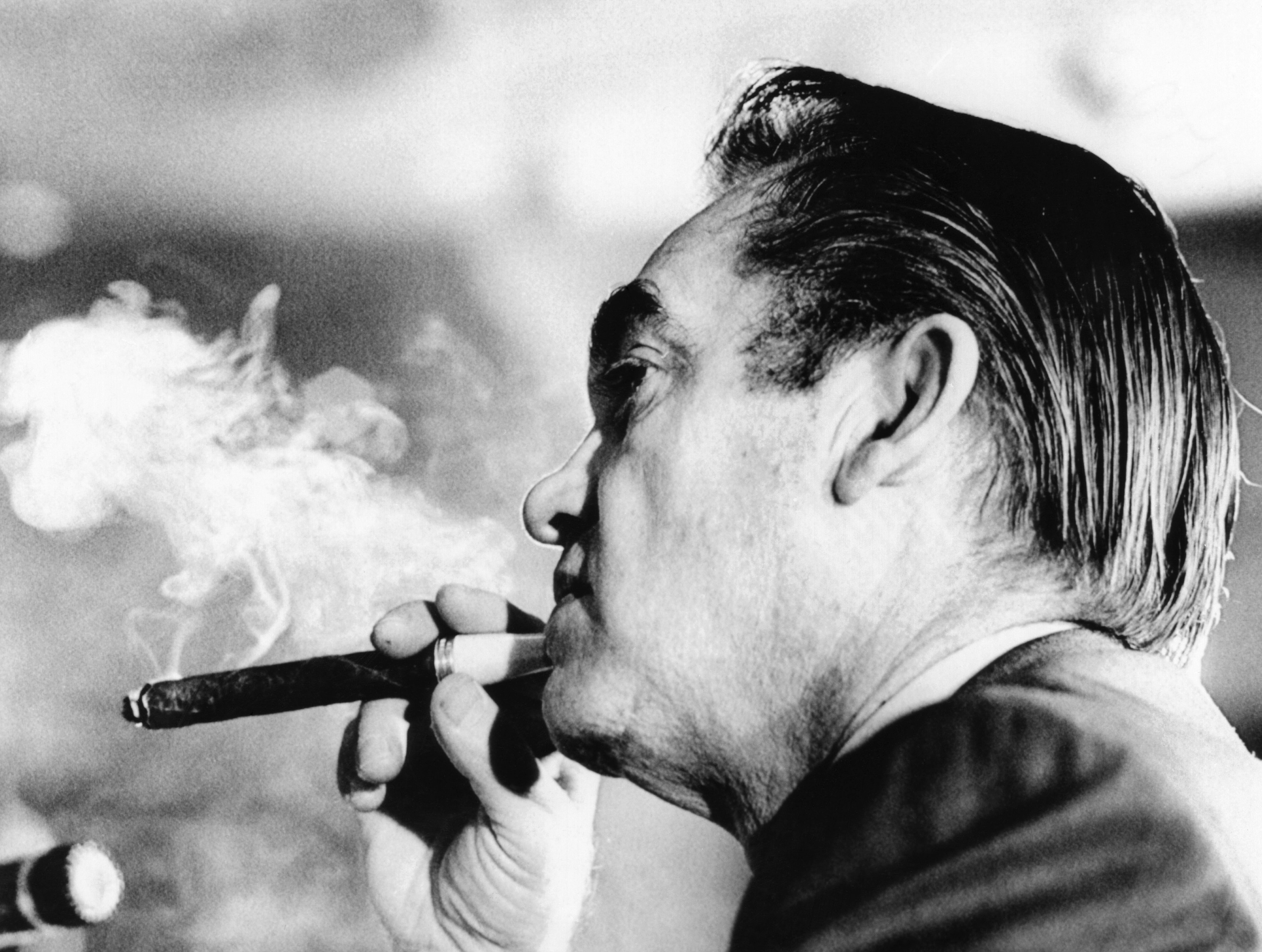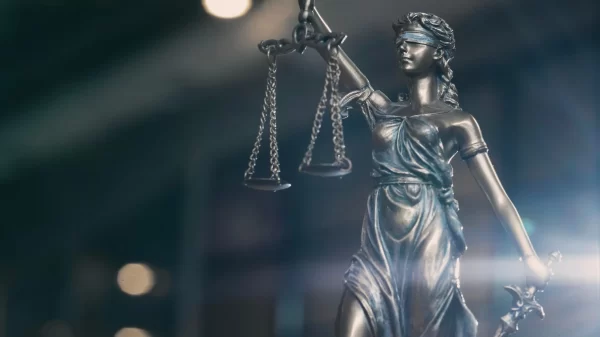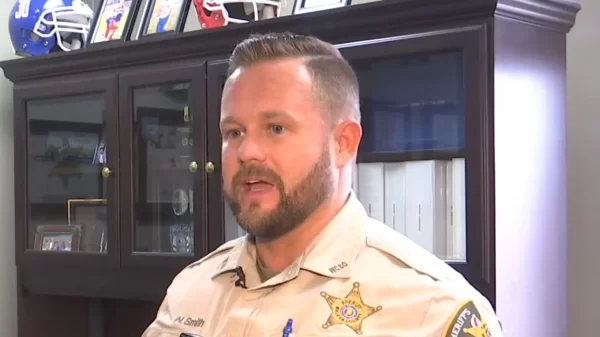A small group of mostly peaceful protesters were shot with rubber bullets and tear-gassed by Huntsville Police and Madison County sheriff’s deputies after an NAACP rally last Wednesday.
The city’s mayor, police chief and the state’s attorney general want the public to believe that anarchists and outsiders provoked law-enforcement to use paramilitary tactics to disperse protesters on the courthouse square.
A video obtained by APR shows peaceful protesters being sprayed, gassed and shot with rubber bullets, as law-enforcement in black-clad riot gear pushed them from the city center.
After the police began their assault, some protesters did hurl insults and a few firecrackers at the approaching officers.
Huntsville Mayor Tommy Battle, police chief Mark McMurray and attorney general Steve Marshall would later assert, without proof, that it was the presence of outside anarchists that led to a violent show of force by law enforcement.
It is a bizarre irony that those protesting police violence against black citizens were met with more police violence.
But what took place in the supposedly progressive Madison County is just a continuation of the type of repressive brutality that has plagued the South for generations.
And the reasons given for the police action is older than “Dixie” and as false as the myth of “The Lost Cause.”
McMurray claimed in a press conference that sheriff’s deputies and police officers fired tear gas and rubber bullets at protesters because anarchists had infiltrated their ranks.
“It’s an unauthorized protest against the government. That’s what it is. That’s what anarchists do. This was not NAACP. This was a separate splinter group that took advantage of a peaceful protest and hijacked it to cause anarchy against our government. Their way is to cause damage, set fires, loot, pillage.”
The idea of professionally trained anarchists whipping up crowds during protest marches is the latest justification for deploying military-style aggression against U.S. citizens.
Battle, in a statement the next day, said he supported law enforcement’s tactics and that outsiders were to blame for the police action.
“What occurred after the NAACP event was disheartening. A second event occurred, structured by people who were not part of our community,” Battle said.
While Battle didn’t use the word anarchists to describe the protesters, he accused “people who were not part of our community” for inciting police violence.
Marshall agreed with McMurray and Battle’s assessment that outsiders and anarchists were the reason law-enforcement fired on protesters. In a press statement, he said he was “satisfied” that the officers had acted appropriately.
According to McMurray, at least 24 people were arrested that evening, all of them from Madison County.
McMurray said that only Madison County residents were detained because professional anarchists know how to avoid arrest.
“The anarchists who came prepared and armed, they’re now going to another city to do the exact same thing,” the chief said. “They know how not to get arrested.”
But directly after the incident, Lt. Michael Johnson of HPD, said the reason for the police action was because they weren’t “going to roll the dice” and take a chance that the crowd could become hostile.
Johnson, speaking soon after the police action, seems to have not yet received the memo about anarchists.
But these false narratives used by Battle, McMurray and Marshall are not new and can be seen in an April 1964, letter from Gov. George Wallace.
“[W]e have never had a problem in the South except in a few very isolated instances and these have been the result of outside agitators,” Wallace wrote to a Ms. Martin.
“White and colored have lived together in the South for generations in peace and equanimity,” Wallace continued. “They each prefer their own pattern of society, their own churches and their own schools—which history and experience have proven are best for both races. (As stated before, outside agitators have created any major friction occurring between the races.)”
Wallace also claims that the news media and propagandists are the real problems and not segregationist policies.
“Contrary to reports of many of the national news media and the propaganda distributed by various organizations, our efforts here in the South are not against the Negro citizen. We fight for the betterment of all citizens in our State.”
He further claims to have done more for black citizens than anyone in the history of the State.
“I personally have done more for the Negroes of the State of Alabama than any other individual.”
If this all sounds familiar, it’s because even today, politicians hope the public is ignorant or so moved by calls for law and order as to miss the point of the protests.
The idea of a tranquil and even docile black population whipped into a frenzy by anarchists and outsiders is as repugnant today as Wallace’s.
Battle, McMurray, and Marshall’s coded racism is as repulsive today as Wallace’s was then.
The false notion that anarchists and outsiders are the reason for aggressive police actions should be condemned.
There should be an independent panel commissioned to investigate the Huntsville police and Madison County Sheriff’s office.
The specter of George Wallace now hangs over Huntsville’s Courthouse Square, and only the bright light of justice can remove it.


